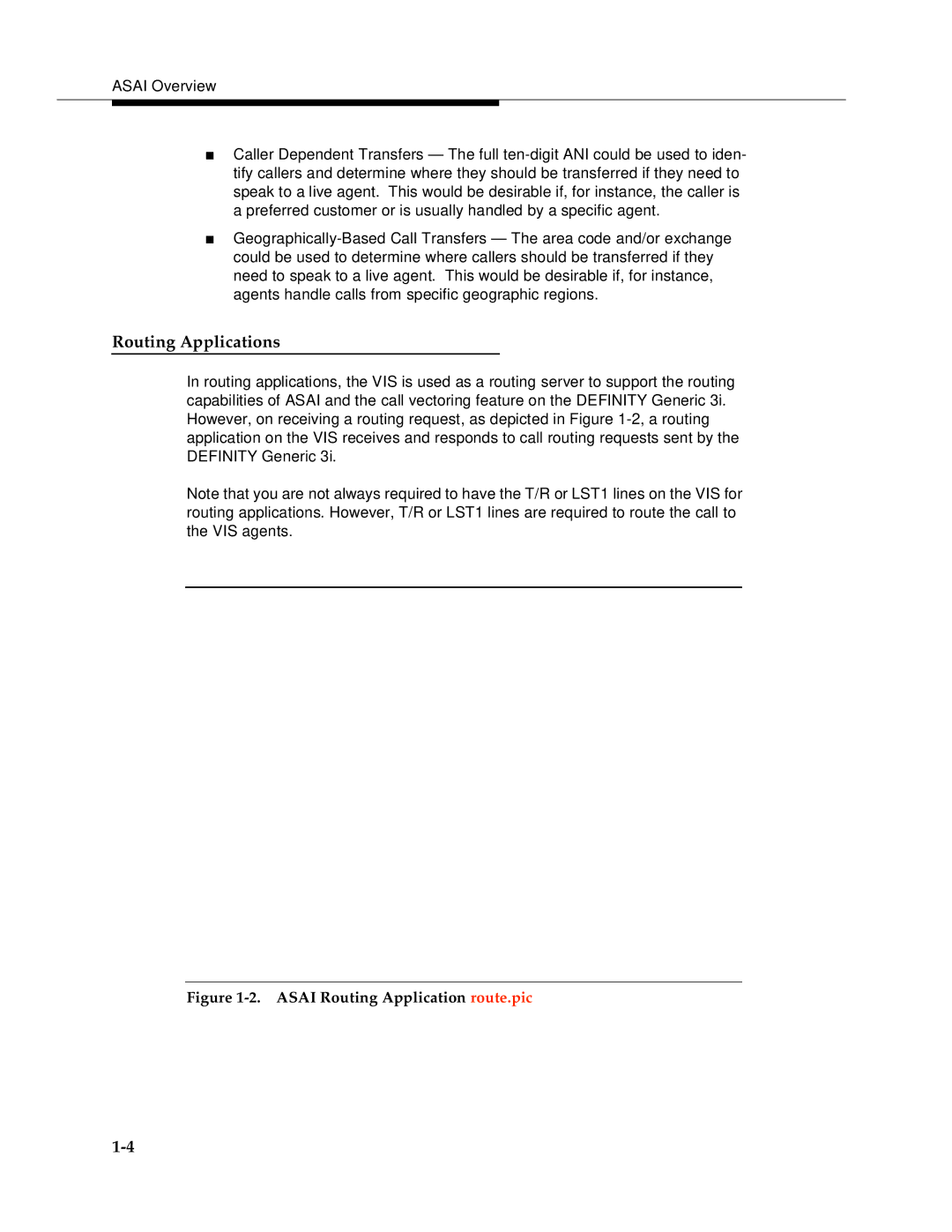
■Caller Dependent Transfers — The full ten-digit ANI could be used to iden- tify callers and determine where they should be transferred if they need to speak to a live agent. This would be desirable if, for instance, the caller is a preferred customer or is usually handled by a specific agent.
■Geographically-Based Call Transfers — The area code and/or exchange could be used to determine where callers should be transferred if they need to speak to a live agent. This would be desirable if, for instance, agents handle calls from specific geographic regions.
Routing Applications
In routing applications, the VIS is used as a routing server to support the routing capabilities of ASAI and the call vectoring feature on the DEFINITY Generic 3i. However, on receiving a routing request, as depicted in Figure 1-2, a routing application on the VIS receives and responds to call routing requests sent by the DEFINITY Generic 3i.
Note that you are not always required to have the T/R or LST1 lines on the VIS for routing applications. However, T/R or LST1 lines are required to route the call to the VIS agents.
Figure 1-2. ASAI Routing Application route.pic

